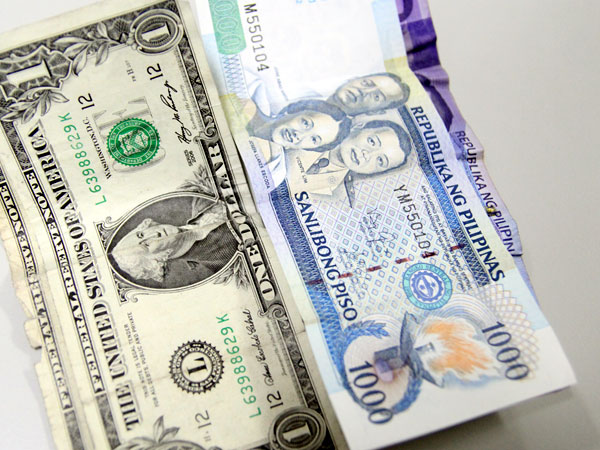
INQUIRER.net FILE PHOTO
The value of the Philippine peso dropped past P54 to a dollar on Wednesday — the lowest in almost 13 years — as sentiment toward the currency remained bearish due to an ongoing rout against emerging market currencies and a stubbornly high local inflation rate.
On the foreign exchange market, the peso ended the trading session at P54.13, which is less than three centavos off the low of P54.155 set on Dec. 2, 2005.
“On top of the bearish outlook of emerging market currencies, the Philippines is also struggling with a large current account deficit, and the latest numbers provide additional concern,” a bank treasurer said.
Yesterday, the government said that the country’s trade-in-goods deficit further widened to $22.49 billion at the end of the first seven months as the sustained jump in imports outpaced exports recovery in July.
Trading volume on the foreign exchange market was heavy with $772.5 million changing hands, versus only $434.1 million during the previous day.
The peso weakened to as low as P54.14, before pulling back slightly toward the end of the trading session.
“Hopefully, P54.50 holds. Otherwise, [it’s] to infinity and beyond,” said another fund manager with a local bank, asking not to be quoted because the Bangko Sentral ng Pilipinas was growing increasingly sensitive to comments from market participants.
Wednesday’s drop came despite the decision of the central bank to reactivate a dollar hedging mechanism introduced during the 1997 East Asian financial crisis — and used heavily during the financial markets turmoil in the lead up to former President Estrada’s resignation in 2001 — in a bid to cushion the currency’s drop.
BSP Governor Nestor Espenilla Jr. said the Currency Risk Protection Program would be made available to eligible corporates with foreign exchange obligations based on more liberalized rules. With this scheme, regulators hope that large corporations with future dollar needs will not rush to buy them early, thus aggravating the peso’s weakness.
Last week, the BSP chief warned that regulators would take “all actions necessary” against “speculative activity by market participants” who have pushed the currency lower in recent weeks.
Espenilla also said authorities would take “strong immediate action using the full range of instruments in its toolkit” to respond to the emerging threats to inflation and inflation expectations.
Regulators’ move to buttress the peso is also meant to address the country’s record high inflation rate of 6.4 percent in August as a weak currency also makes imported goods like petroleum more expensive.